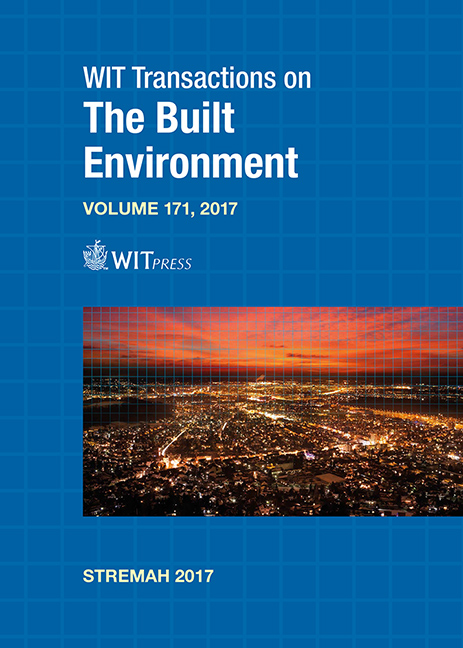ENERGY REHABILITATION OF VENTILATED FAÇADES USING PHENOLIC PANELLING AT THE UNIVERSITY OF ALICANTE MUSEUM: THERMAL CHARACTERISATION AND ENERGY DEMAND
Price
Free (open access)
Transaction
Volume
171
Pages
13
Page Range
3 - 15
Published
2017
Paper DOI
10.2495/STR170011
Copyright
WIT Press
Author(s)
VÍCTOR ECHARRI IRIBARREN, ANTONIO GALIANO GARRIGÓS, ALMUDENA ESPINOSA FERNÁNDEZ
Abstract
In the 1990s, phenolic panels made from Bakelite-finished wood were given a 1 mm-thick finishing layer of natural wood, which was protected by a film of waterproof paper. The edges were protected with the same type of phenolic resins. In practice, a gradual deterioration of the protective layer occurred due to the combined action of UV rays and rainwater. When the wood lost its protective layer, it expanded, deformed and acquired whitish stains due to the action of microorganisms. The edges suffered similar deterioration processes. We present a sample of the damage at a museum. The deterioration of the panels was worsened by their incorrect positioning during construction. A type of sandwich was made, with phenolic panel on the exterior, then rock wool insulation and MDF wood panels. This was given rigidity using wooden frames. When thermal bridges occurred due to gaps in the insulation, this gave rise to differences in surface washing which worsened the outside appearance. Once a diagnosis of the damage had been arrived at, energy rehabilitation of the covering was carried out, which involved putting in new-generation phenolic panels with a non-degradable acrylic layers and edges protected using synthetic resins. These were fitted on top of the pre-existing panels using threaded rods and a 3 cm layer of polyurethane insulation was sprayed over the whole surface. Furthermore, air has been allowed to circulate, as in a ventilated façade. This avoids any possible continuous damp problems and at the same time, in summer, avoids heat building up due to the solar radiation. The building was monitored over a full, year-round cycle which allowed us to learn about its energy performance using Design Builder software, which had been calibrated using temperature adjustments and real energy consumption data. We present the results, which show the reduction in the building energy demand.
Keywords
energy rehabilitation, Bakelite-finished wood, monitoring, damage to buildings




